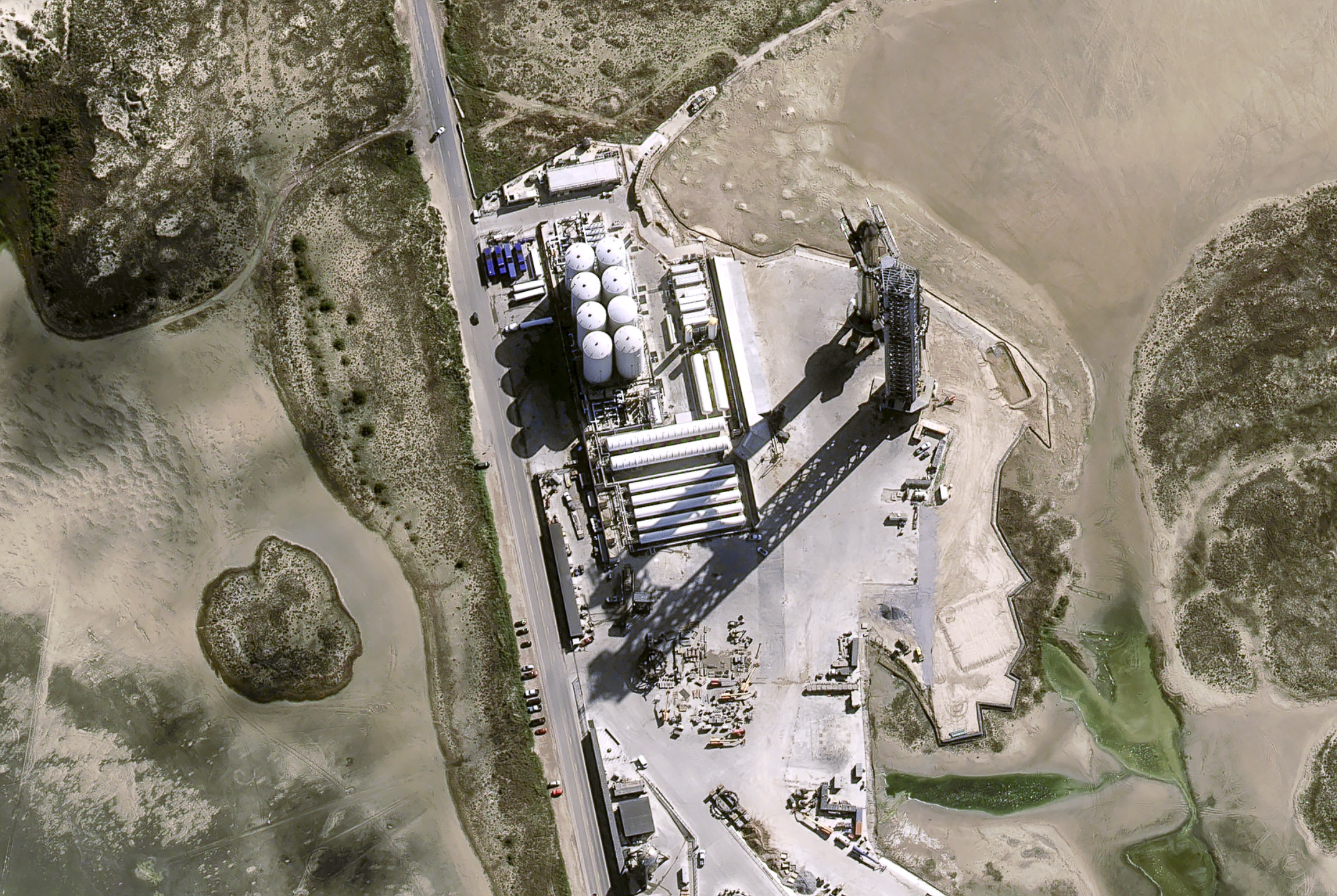
The biggest rocket ever built was just spotted from space.
SpaceX stacked its huge Starship vehicle earlier this week, placing the Ship 24 upper-stage spacecraft atop the Booster 7 first stage at the company's Starbase site, near the South Texas city of Brownsville.
Together, the Ship 24-Booster 7 duo stands about 395 feet (120 meters) tall, making it bigger than NASA's iconic Saturn V moon rocket and the agency's new Space Launch System, which recently launched the Artemis 1 moon mission. Starship is plenty big enough to be spotted from orbit by sharp-eyed satellites, as new imagery shows.
Video: SpaceX ignites multiple engines on Starship Super Heavy booster for 1st time
"Hey Starship, we are watching you from space!" the European aerospace giant Airbus tweeted on Thursday (Jan. 12), in a post that included a photo of the Starship stack taken by one of the company's Pléiades Neo satellites.
Airbus currently operates two Pléiades Neo Earth-imaging spacecraft, which are capable of resolving features as small as 12 inches (30 centimeters) from their perch in low Earth orbit. Two more Pléiades Neo satellites were supposed to go up in December 2022, but they were lost when their Arianespace Vega C rocket failed during liftoff.
Hey Starship, we are watching you from space! 👋🛰 #PléiadesNeo pic.twitter.com/xeF5Y35T9zJanuary 12, 2023
SpaceX tweeted out amazing imagery of the newly stacked Starship on Thursday as well. These shots, taken from much closer to the ground, show the stainless-steel vehicle and its huge "Mechazilla" launch tower rising through low-lying clouds at Starbase, which sits right on the Gulf of Mexico.
Get the Space.com Newsletter
Breaking space news, the latest updates on rocket launches, skywatching events and more!
SpaceX is prepping Ship 24 and Booster 7 for an orbital test flight, the first ever for a Starship vehicle. This crucial trial could lift off as soon as late February, SpaceX founder and CEO Elon Musk has said.
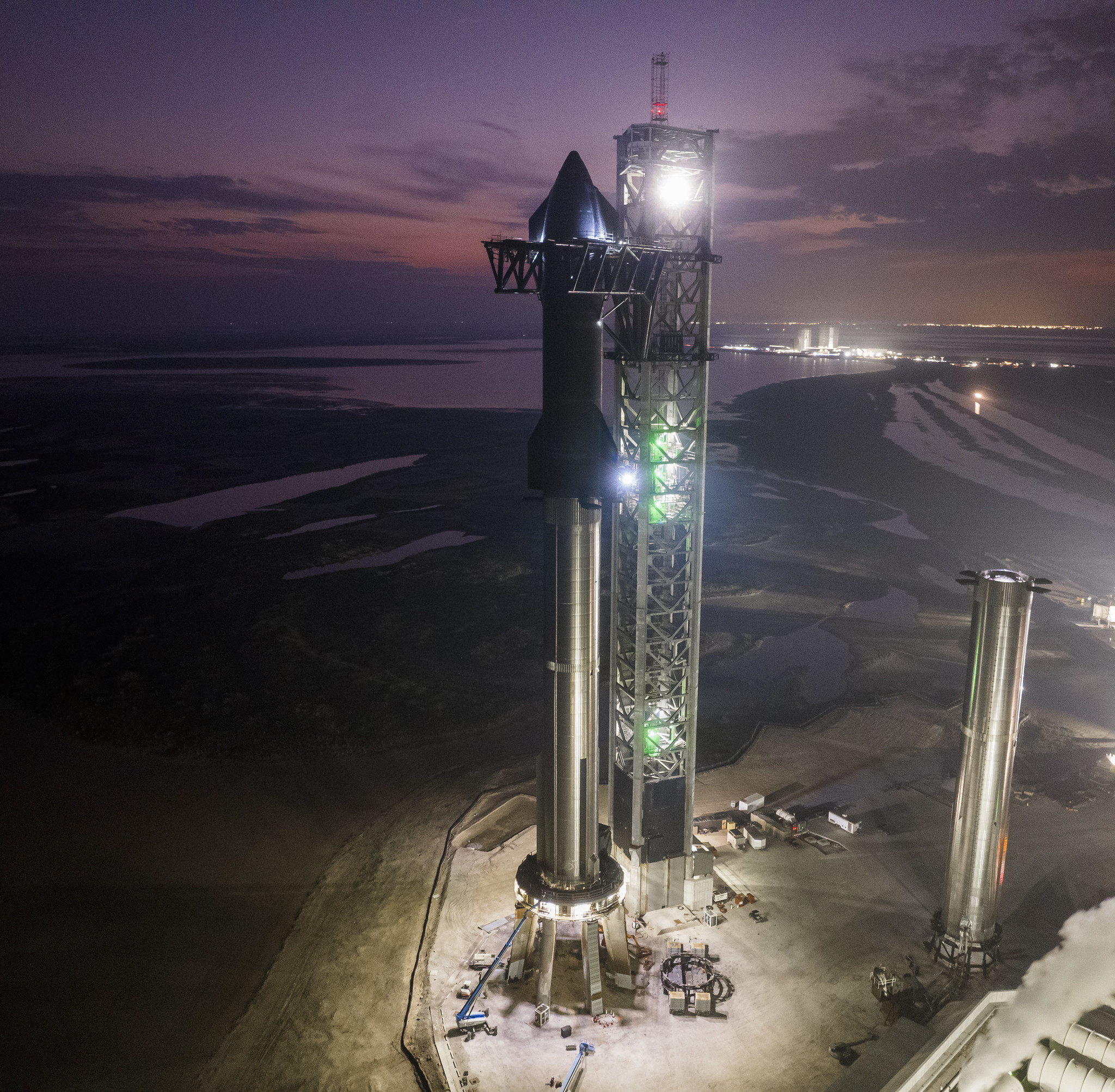
Starship will be destacked before that happens, however. SpaceX wants to perform a full 33-engine static fire with Booster 7, Musk said recently, and that test will occur without Ship 24 attached. (Static fires, in which engines are briefly lit while a vehicle remains anchored to the ground, are a common prelaunch test.)
Like Booster 7, Ship 24 is powered by SpaceX's next-generation Raptor engine. Ship 24 lit up all six of its Raptors during a September 2022 static fire. Booster 7's static fires have never involved more than 14 of its engines.
Starship has been stacked and destacked before. SpaceX placed Ship 24 atop Booster 7 twice in October 2022, for example.
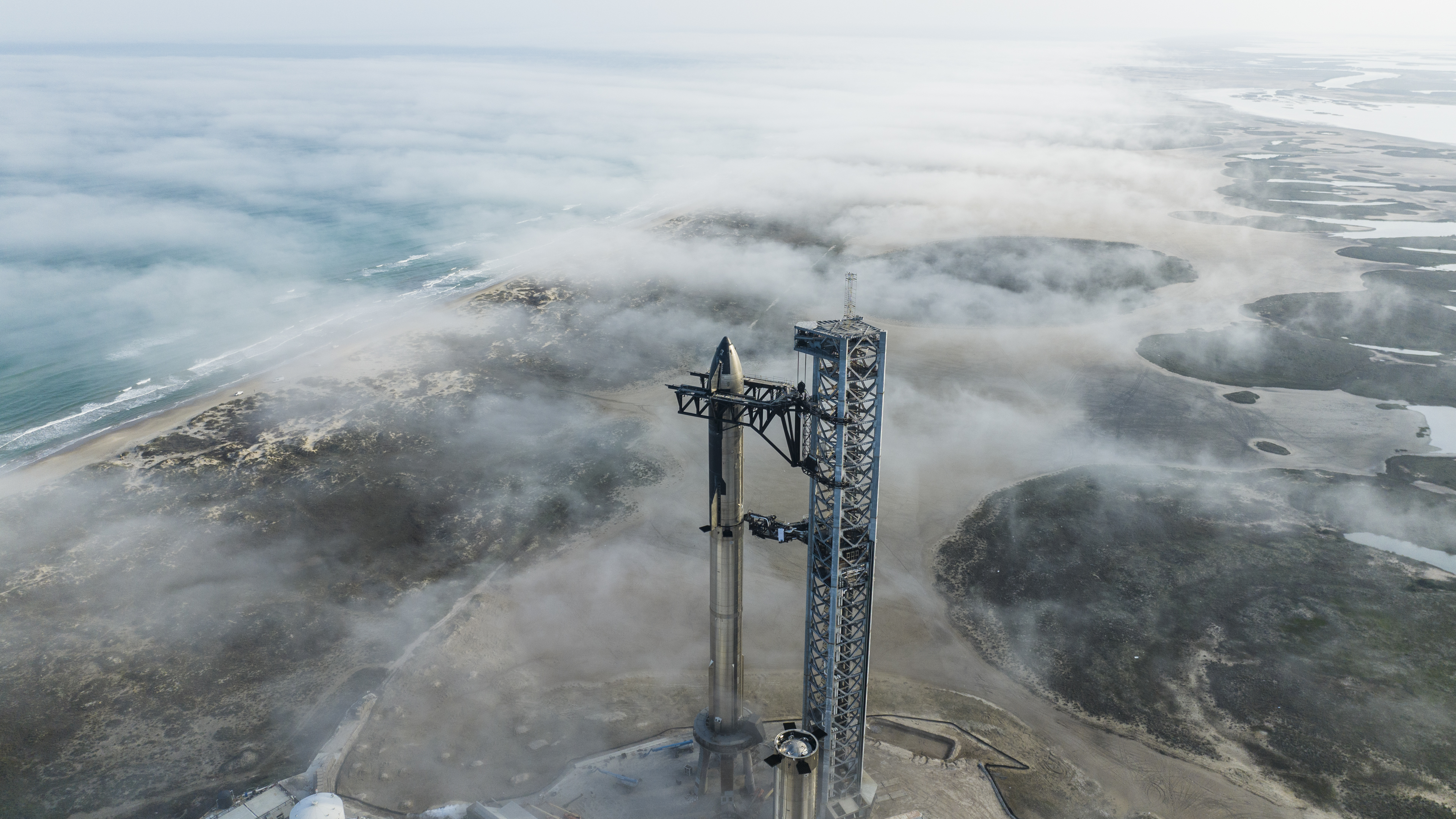
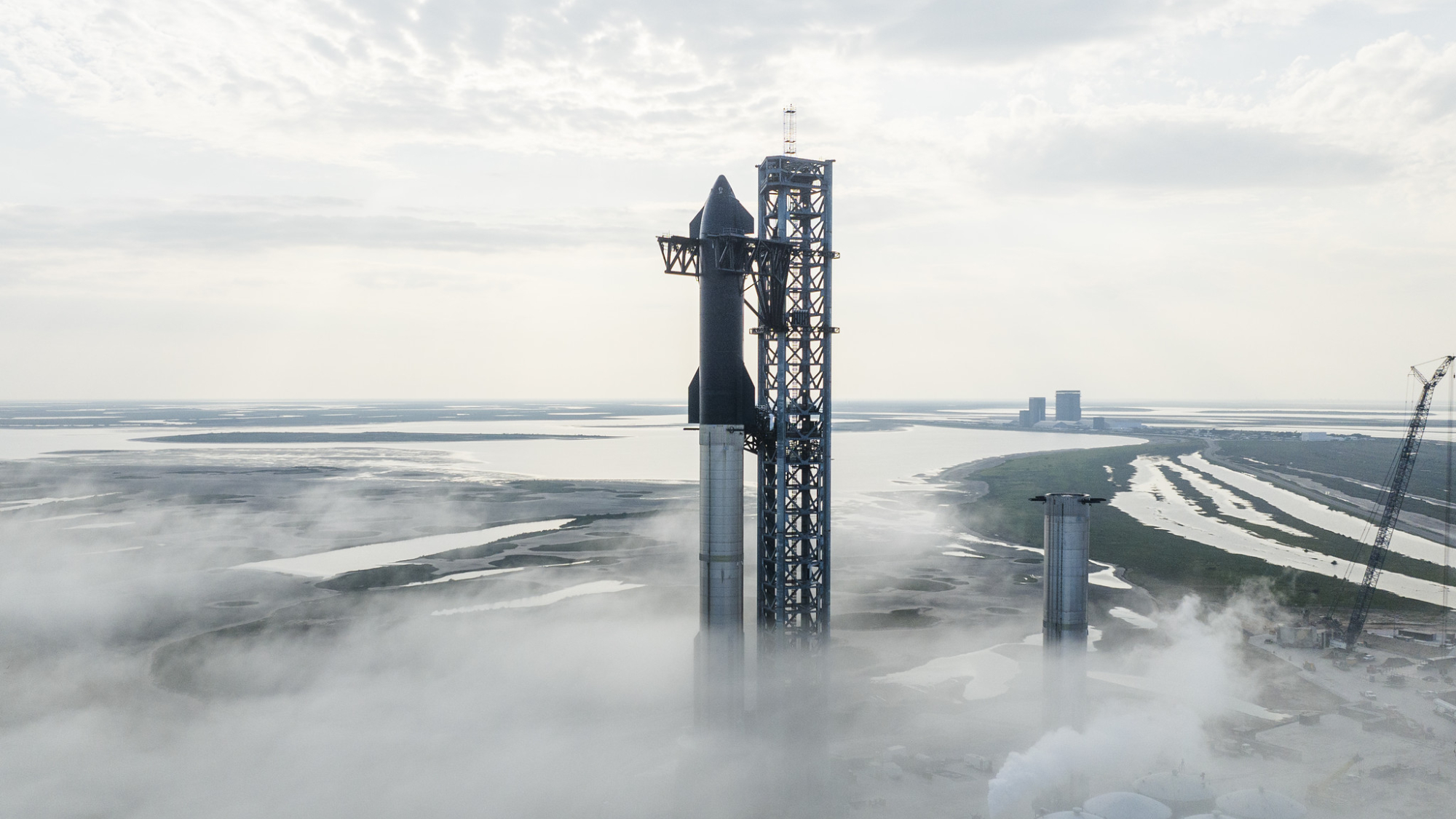
The orbital test flight will be the first Starship liftoff in nearly two years. The most recent Starship launch involved a three-engine upper-stage prototype called SN15, which flew about 6.2 miles (10 kilometers) into the Texas sky in May 2021 and came back down for a soft landing.
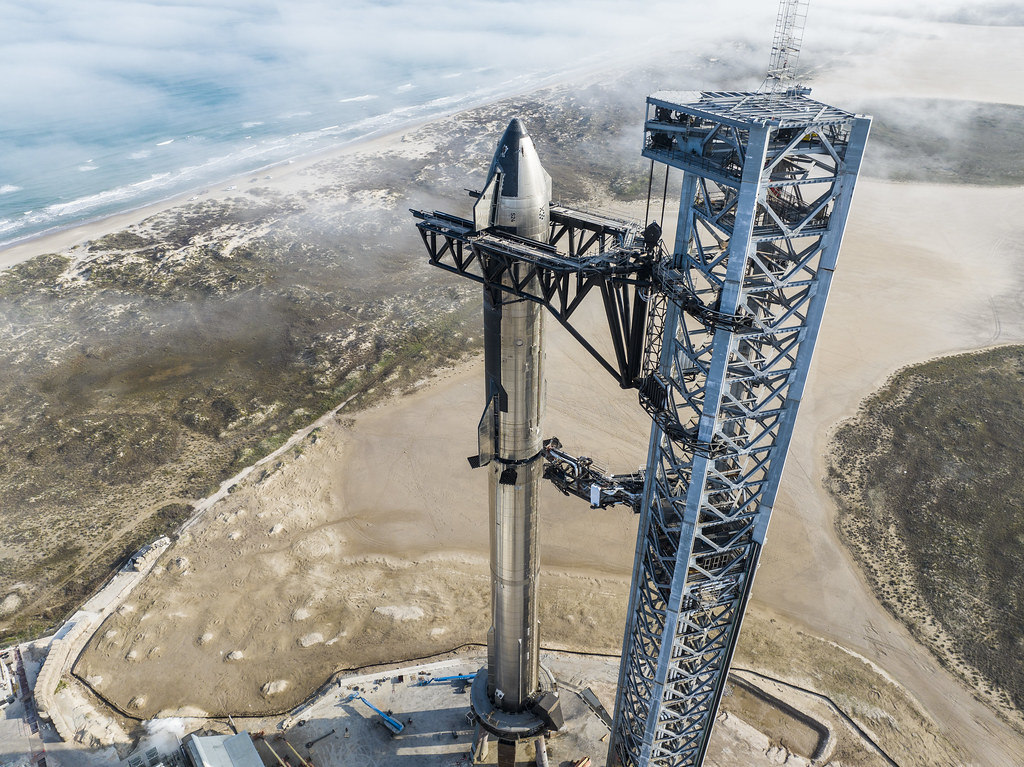
SpaceX isn't solely focused on Starship, of course; the company is working multiple missions with other vehicles at the moment as well.
On Saturday (Jan. 14), for example, SpaceX plans to launch a mission for the U.S. Space Force using its powerful Falcon Heavy rocket. And a SpaceX Falcon 9 will loft 51 of the company's Starlink internet satellites to orbit on Sunday morning (Jan. 15), if all goes according to plan.
Mike Wall is the author of "Out There" (Grand Central Publishing, 2018; illustrated by Karl Tate), a book about the search for alien life. Follow him on Twitter @michaeldwall. Follow us on Twitter @Spacedotcom or on Facebook.
Join our Space Forums to keep talking space on the latest missions, night sky and more! And if you have a news tip, correction or comment, let us know at: community@space.com.

Michael Wall is a Senior Space Writer with Space.com and joined the team in 2010. He primarily covers exoplanets, spaceflight and military space, but has been known to dabble in the space art beat. His book about the search for alien life, "Out There," was published on Nov. 13, 2018. Before becoming a science writer, Michael worked as a herpetologist and wildlife biologist. He has a Ph.D. in evolutionary biology from the University of Sydney, Australia, a bachelor's degree from the University of Arizona, and a graduate certificate in science writing from the University of California, Santa Cruz. To find out what his latest project is, you can follow Michael on Twitter.








